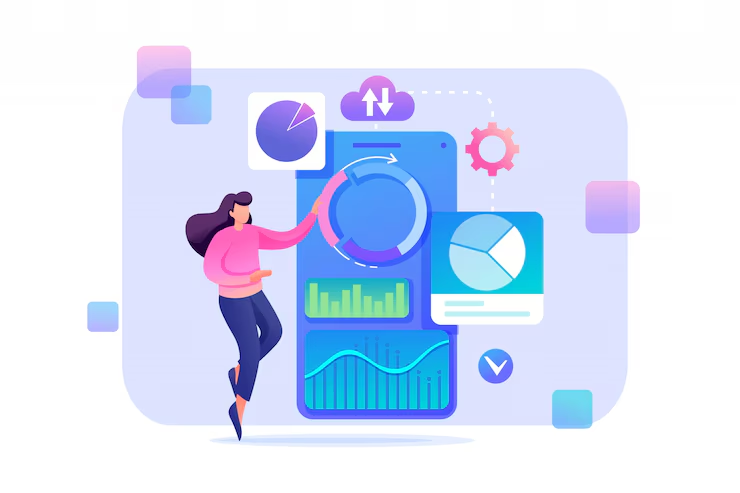
Since it first launched, React Native has evolved a lot. It now powers apps for big corporations as well as small companies; it lets developers create native mobile apps using JavaScript and a shared codebase. But even while it speeds up development a lot, performance can still be a problem, especially in bigger projects with many features.
In 2025, you need to do more than just simple optimizations to get the most out of React Native. This tutorial goes into detail on sophisticated performance tuning strategies that may help you make your apps quicker and more responsive, whether you’re working on a project in-house or with a top-tier React Native app development services provider.
Why React Native Performance Needs Special Attention
React Native renders UI through a bridge between JavaScript and native code. While flexible, this bridge can become a bottleneck if not managed carefully.
Performance issues can manifest as:
- Slow navigation between screens
- Janky animations
- Delays in touch response
- Memory leaks or UI thread blocks
For apps aiming at enterprise scale or high user engagement, these issues can’t be ignored. This is why many teams choose to hire React Native developers with specific expertise in performance optimisation.
1. Reduce Bridge Traffic with Efficient Data Transfer
Every interaction between JS and native modules involves the React Native bridge. Reducing how often and how much data is sent across the bridge can significantly improve performance.
Best Practices:
- Avoid frequent setState calls during animations
- Batch operations instead of sending multiple individual events
- Use libraries like Reanimated 2 and React Native Gesture Handler, which run animations on the native thread
This reduces lag and ensures smoother, frame-perfect interactions, especially on older or mid-range devices.
2. Leverage Hermes Engine for Faster Startup
Hermes is a JavaScript engine optimised for mobile. Enabling it for Android (and now iOS) results in:
- Faster app startup
- Lower memory usage
- Smaller APK size
- Improved garbage collection
To enable Hermes:
bash
cd android && ./gradlew clean
Then toggle it in your android/app/build.gradle file.
Most experienced React Native mobile app development company teams now treat Hermes as a default for production builds.
3. Optimise Navigation and Screen Transitions
Navigation is one of the most noticeable pain points in under-optimised apps. To improve it:
- Use React Navigation’s native stack (@react-navigation/native-stack) for screens that require high performance
- Prefetch screens and data in the background
- Avoid re-rendering screens unnecessarily — use React.memo, useMemo, and useCallback appropriately
For complex multi-tab or nested navigators, offloading transitions to the native layer improves fluidity and reduces dropped frames.
4. Use FlatList and SectionList Correctly
Poor list handling is a top cause of lag. If your app displays scrollable content:
- Use FlatList or SectionList over manually rendered components
- Implement getItemLayout to improve scroll performance
- Use windowSize and initialNumToRender wisely
- Avoid anonymous functions inside renderItem
React Native’s virtualisation is powerful, but misuse of lists still haunts many apps. That’s why performance-conscious teams often hire dedicated React Native developers who deeply understand these subtleties.
5. Avoid Memory Leaks and UI Thread Blocking
React Native apps can suffer from performance degradation over time due to uncleaned subscriptions or long JS operations.
Fixes:
- Use cleanup functions with useEffect
- Monitor memory usage during debugging
- Move heavy logic off the main thread using InteractionManager or BackgroundTask
- Use native modules or native threads for CPU-intensive tasks (e.g., video encoding, file parsing)
A good React Native app development services provider will build performance auditing into your QA pipeline to catch these before they affect users.
6. Minimise Unnecessary Re-renders
Rendering logic that runs too often can create jank or slow down interactivity.
Tips:
- Profile with React DevTools and Flipper
- Use shouldComponentUpdate or React.memo to control re-renders
- Avoid passing new object/array literals as props unless memoized
- Use selective state updates instead of global re-renders
Smart component architecture pays off in the long run, particularly in apps with complex user flows or nested components.
7. Optimise Images and Media Handling
Media assets are another common source of performance issues.
Do this:
- Use react-native-fast-image for better caching and loading
- Compress images and use appropriate resolution for screen density
- Avoid rendering full-screen images without progressive loading
- Lazy-load media-heavy components like carousels and galleries
With smart media handling, you reduce bundle size, memory usage, and load times, which translates to better UX and improved app store ratings.
8. Monitor and Improve Runtime Performance
Tools like Flipper, Sentry, and Firebase Performance Monitoring provide visibility into:
- JS thread execution time
- UI and render frame drops
- Crash analytics
- API latency
Ongoing monitoring lets you identify regressions or slowdowns before users do — a crucial part of long-term support offered by any reliable react native mobile app development company.
When Should You Prioritise Performance Optimisation?
While every app benefits from tuning, these scenarios demand it most:
- Apps with animation-heavy UIs or gaming elements
- Enterprise tools with large data sets or frequent API calls
- Mobile commerce or travel apps where speed affects conversion
- Apps targeting low-end Android devices or global audiences
- Apps with offline-first functionality and background syncing
If you’re targeting any of these, it’s wise to hire React Native developers who specialise in performance-critical apps.
Conclusion: Build Fast, Stay Smooth, Scale Confidently
React Native enables teams to deliver cross-platform apps quickly, but performance doesn’t come for free. By applying advanced optimisation techniques, you can make your app feel truly native, not just in name but in speed and responsiveness.
Whether you’re scaling an existing codebase or launching something new, working with a dedicated React Native app development services partner — or choosing to hire dedicated React Native developers — ensures your app doesn’t just ship… it performs.
